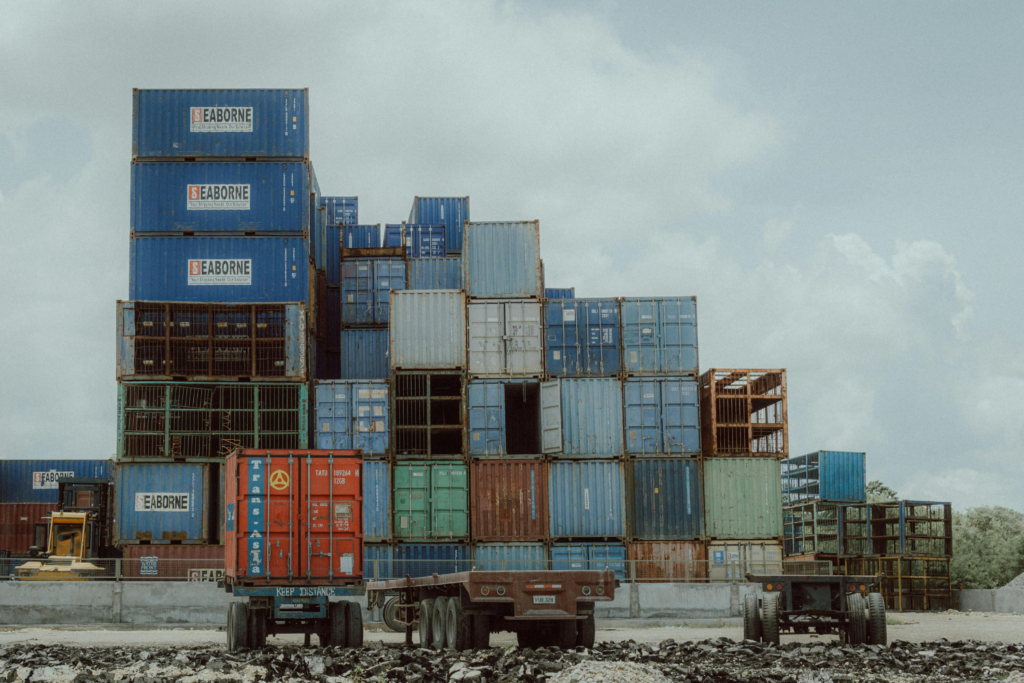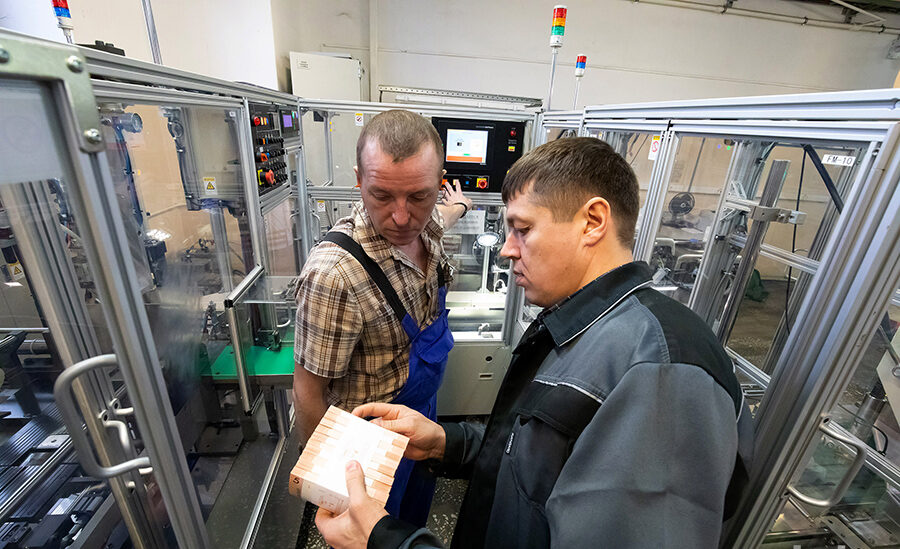This translation was generated using artificial intelligence. We strive for accuracy and quality, but automated translations may contain errors. You can read the original text here.
The private sector of the Belarusian economy developed dynamically throughout the 2010s and, by the beginning of the current decade, had become comparable to the state sector in terms of its contribution to GDP.
Since 2020, however, the institutional environment for entrepreneurship has shifted in an unfavorable direction, and the tightening of sanctions pressure since 2022 has further complicated the operating conditions for private businesses.
These changes, combined with a reduction in the volume of publicly available official statistical data, have raised concerns about a potential significant decrease in the private sector’s contribution to the Belarusian economy after 20191.
Understanding the current condition of both sectors and the changing nature of their roles within the economy is essential for accurately diagnosing the state of the Belarusian economy and assessing its future development prospects.
To achieve this, we systematize and analyze the dynamics of the key indicators of the private and state sectors of the economy after 2019.
Indicators of the Private and State Sectors in 2020–2024
Employment
The number of employed individuals in the Belarusian economy decreased by almost 5% between 2020 and 2024 due to unfavorable demographic trends and the ongoing process of emigration.
Employment dynamics, however, varied by ownership type. The number of employees in state-owned enterprises and organizations with state participation continued to decline, while employment in the private sector grew by over 1%.
As a result, the share of the private sector in total employment increased from 42.9% in 2019 to 45.7% in 2024, while the share of the state sector fell from 57.1% to 54.3%, respectively.
Industry and Goods Exports
In 2024, private commercial organizations contributed 30.5% to total industrial output. Their share has increased by 3.8 percentage points since 2019, while the share of state-owned enterprises decreased by the same amount.
At least partially, the decrease in the share of state-owned enterprises in production was driven by reduced oil refining output, which has not recovered to 2019 levels due to the impact of sanctions. For another major sanctioned sector — potash fertilizer production — the conclusions are less straightforward: based on indirect indicators, potash production in 2024 returned to 2019 levels, but selling prices declined due to a widening price discount on Belarusian potash relative to global benchmarks.
Overall, the combined share of oil products and potash fertilizers in total goods exports decreased from 26% in 2019 to 15–20% during 2022–2024.

Other exports from state-owned enterprises grew significantly after 2019, with their share in total goods exports rising by almost 9 percentage points, reaching nearly 40% in 2024. This increase resulted from strengthened industrial cooperation between Belarus and Russia following the tightening of the sanctions regime in early 2022.
Private firms also took advantage of newly available niches in the Russian market and significantly increased their goods exports after 2019. However, private-sector exports grew at a slower pace compared to those of state-owned enterprises. As a result, amid declining export values for oil products and potash fertilizers, the non-state sector’s share in total exports during 2022–2024 remained broadly unchanged compared to 2019.
It is likely that, under these new operating conditions, private companies no longer serve as the primary drivers of Belarus’s foreign trade diversification or in reducing the country’s dependence on Russian resources and the Russian market.
Goods Imports
According to available estimates, the share of non-energy imports by the private sector in total goods imports increased by almost 13 percentage points since 2019, reaching 73% by the end of 2024. In contrast, the share of non-energy imports by state-owned enterprises declined by nearly 7 percentage points over the same period.
At the same time, the total value of goods imports into Belarus has grown only due to private firms since 2019, while state-owned organizations have reduced their import volumes.
Thus, the private sector played a pivotal role in restructuring import supply chains into Belarus after they were disrupted in early 2022. Without the high adaptability of private businesses and their ability to find non-standard solutions in rapidly and radically changing conditions, the economic downturn in Belarus in 2022 would have been significantly deeper, and the subsequent recovery in 2023 and growth in 2024 would have been much slower.
Investments and Trade Dynamics
In 2019, 61.4% of total investments were generated by the state sector. Between 2022 and 2024, its share fluctuated within the range of 63.6%–65.5%, while the share of private businesses remained around 34.5%–36.4%, respectively.
The modest rise in the role of the state sector in capital investments is linked to the government’s efforts to launch a new investment cycle.
In retail trade and food services, the private sector consolidated its position after 2019. Its share increased by 3 and 11.4 percentage points, respectively, reaching 86.8% and 78.9% by the end of 2024.
Gross Value Added (GVA) and Productivity
Statistical data on the contribution of the state and private sectors to Belarus’s GVA or GDP are not publicly disclosed. For the purposes of this assessment, we rely on an approach that assumes labor productivity in the state and private sectors correlates with overall productivity in the economy in the same proportions as wages in these sectors relate to the national average wage2.
According to the estimates, the private sector accounted for nearly 50% of Belarus’s GVA in 2019, while the state sector contributed slightly above 50%. From 2020 to 2024, the shares of both sectors in GVA fluctuated around 50%, and by the end of 2024, the private and state sectors each generated approximately half of the country’s gross value added.
At the same time, in 2020–2024, the state sector continued to produce less gross value added per employee compared to private businesses. However, the gap narrowed from about 21% in 2019 to roughly 15% in 2024. This suggests that labor productivity growth in the state sector outpaced its dynamics in the private sector.
That said, such dynamics are unlikely to remain sustainable in the long term, given the mobilization-driven operations of state-owned enterprises and the influence of temporary growth factors. Indirect evidence for this conclusion comes from the absence of comparable improvements in the relative efficiency of investment processes in the state sector.
One ruble invested in fixed capital between 2020 and 2024 in the state sector produced nearly 45% less gross value added than in the private sector, and this gap has widened since 2019.

New Trends of the Last Five Years and the Current Status Quo
After 2019, Belarus’s private business sector continued to account for roughly half of the country’s gross value added (GVA) and remained the economy’s most productive component. The importance of the private sector has remained stable, even amid a worsening institutional environment and increasingly stringent sanctions against Belarus.
Private enterprises played a critical role in restructuring supply chains between 2022 and 2024 following the disruptions of early 2022. Without the flexibility and adaptability of the private sector, the performance of both state-owned enterprises and the economy as a whole would have been considerably weaker during this period.
The adaptability of businesses suggests that the next period of transformation in economic relations — which is highly likely to follow the end of military operations in Ukraine — could be navigated by the Belarusian economy without significant losses in output or overall welfare. However, businesses need to have contingency plans in place to adapt to changing circumstances, including rising competition in both Belarusian and Russian markets.
Policies that would be particularly beneficial for the private sector today include measures aimed at strengthening market institutions, reducing excessive administrative intervention in business operations, and increasing pricing flexibility. Without such measures, the adaptive capacity of private enterprises is likely to decline.
An important observation is that the upward trend in the private sector’s share of the Belarusian economy, evident until 2020, has stalled. The size of the state sector has remained significant, especially in industrial production. At the same time, the efficiency of state-owned enterprises continues to lag behind that of private firms, particularly in terms of investment returns.
The transformation of Belarus’s entrepreneurial landscape in recent years has helped ensure a certain level of resilience within the national economy. However, this likely represents the maximum that can be achieved under the current status quo. Maintaining the current status quo provides little foundation for expecting stronger economic growth or achieving long-term sustainability driven by innovation, especially once the specific growth factors of 2023–2024 are exhausted.
- At the same time, we do not set ourselves the task of developing recommendations for reforming the state-owned enterprise sector or increasing the significance of the private business sector. This issue has been studied extensively in the academic economic literature, including in the annex on Belarus. The full version of our study, on the basis of which this column was prepared, is available here.
- The estimates of the sectors’ contributions to GVA obtained using this approach are subject to uncertainty and involve a margin of error.

